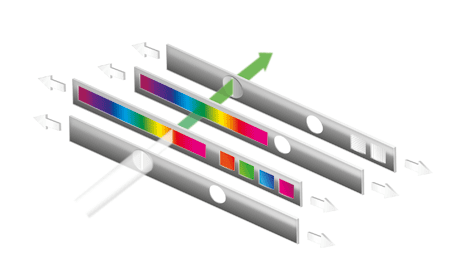
BMG LABTECH has been granted US Patent 9,733,124 for its Microplate Reader with Linear Variable Filter.
The patent covers the company's dual monochromator technology using Linear Variable Filters (LVF) for the selection of wavelength and bandwidths, providing protection for the unique LVF Monochromator design and recognition of the high quality of the innovation being carried out by the BMG LABTECH team.
LVF Monochromator technology - which was first integrated in the CLARIOstar microplate reader - is are based on Linear Variable Filters, which have variable coatings along their lengths that can reject or pass certain wavelengths of light. A linear variable filter consists of two quartz slides, a linear variable long pass and a linear variable short pass that, when properly aligned, separate light into distinct wavelengths and continuously adjustable bandwidth.
The CLARIOstar contains two LVF Monochromators, one for excitation and one for emission. In between the two monochromators is another unique feature of this system: a Linear Variable Dichroic Mirror slide. This is used to separate the emission
from the excitation light.
Since LVF Monochromators separate light differently from conventional grating-based monochromators, they provide significantly higher sensitivity and flexibility. The transmitting filter design allows for higher light transmission by eliminating internal loss of light, caused by the diffraction of the grating. The LVF Monochromator design also avoids stray light, decreasing the background signal and significantly increasing sensitivity.
LVF Monochromators have continuously adjustable bandwidths from 8 to 100 nm. Larger bandwidths allow more light for excitation and emission, which means greater sensitivity. The Linear Variable Dichroic mirror splits the emission from the excitation light, optimising the light path and greatly reducing the background signal.
BMG LABTECH has also eliminated the need for fiber optics to guide the light to the microplate well. The optical system of a microplate reader with LVF Monochromator uses a free-air optical path to direct the light, for significantly higher transmission and lower background (less autofluorescence).





